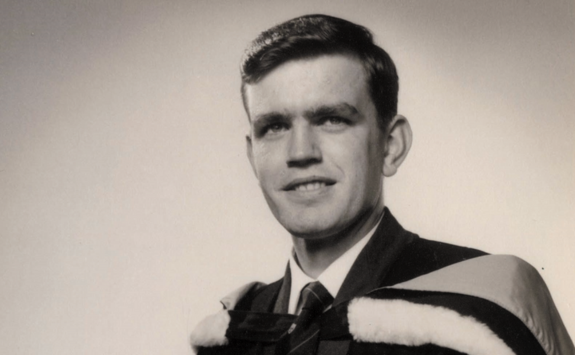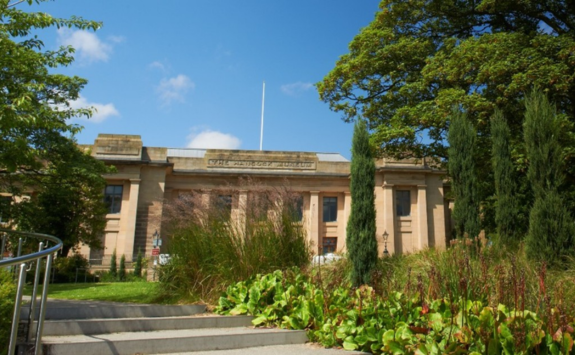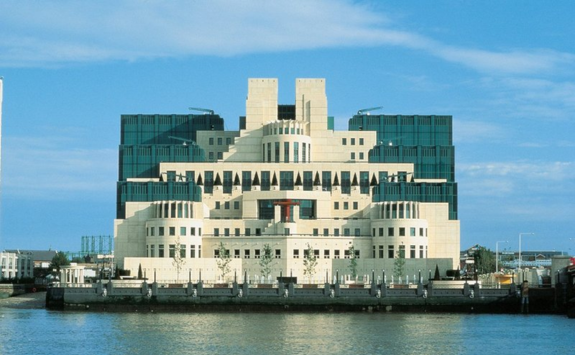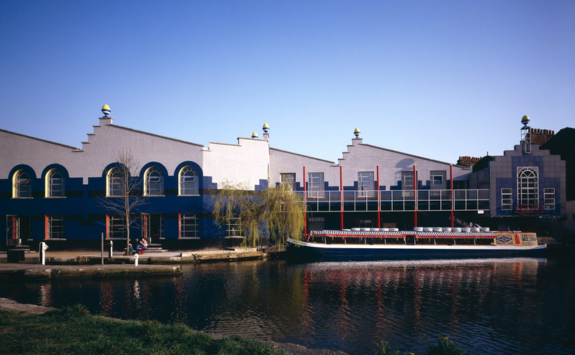A celebration of the life and work of alumnus Sir Terry Farrell CBE
We look back at the impact Architecture graduate Sir Terry Farrell CBE had on cities around the world, and spotlight some of his most famous projects.
3 November 2025
Sir Terry grew up in Newcastle upon Tyne and studied Architecture at Newcastle University between 1956 and 1961. He founded his own international architecture firm, Farrells, in 1980, and led major architectural projects in Newcastle – such as the Quayside regeneration – as well as iconic international landmarks like the MI6 Building in London and the largest railway station in the world, Guangzhou Station in China.
Throughout his career, Sir Terry championed urban planning and helped shape government policy on key issues. He was made a Visiting Professor in the School of Architecture, Planning and Landscape in 2016 and in 2023, the Farrell Centre officially opened in the heart of our campus with the aim of increasing public engagement in the future of architecture and planning. It is an ‘urban room’ where local people can go to learn about the past, present and future of where they live.

Following Sir Terry’s death in September 2025, at the age of 87, Newcastle University’s Vice-Chancellor and President Professor Chris Day CBE commented:
“Sir Terry’s work was distinguished not only by its bold creativity and postmodern flair, but also by a profound understanding of place, context, and community.
“As a Newcastle University Architecture graduate, he remained a passionate advocate for architectural education throughout his life. His commitment to inspiring young talent led to him becoming a Visiting Professor on campus in 2016. Expressing his enduring pride in and support for the University, he generously donated his extensive archive to us in 2018 and pledged £1 million towards an urban room in Newcastle, which led to the opening of the Farrell Centre. Today, it stands as a living embodiment of his belief that architecture should be accessible, inclusive, and rooted in community - a belief that we share with pride.
“His legacy extends far beyond the buildings he designed. His contributions to education and urban discourse will continue to shape the future of architecture and city-making for years to come.”
Below, we spotlight just some of the impressive projects and landmarks created by Sir Terry in his career. How many do you recognise?
In Newcastle
After graduating from Newcastle University in 1961, Terry set off for London to launch his career but always maintained a close affinity with our city and completed significant projects here, including: the International Centre for Life, the Great North Museum and a campus masterplan for his alma mater. But his most significant project was the regeneration of the Newcastle quayside. Here, he devised a scheme that combined the rehabilitation of historic buildings with the addition of new suitably monumental buildings and the creation of a new public space – reinventing what had become a redundant part of the city.

In London
No architecture project is more redolent of the 1980s than Farrell’s TV-am building in Camden. The converted warehouse-cum-TV studio has three distinct components – canal-side, interior and street frontage – with separate design teams working on each!
Terry also designed Embankment Place in 1990, an office building that made use of Charing Cross Station’s air rights. From the outset, this made it highly complex, with the building suspended on 18 columns that rise through the tracks and platforms.
Perhaps the most iconic of Terry’s designs in London is Vauxhall Cross, the home of MI6. During the design process, Terry wasn’t told what governmental agency the building would be occupied by and apparently assumed it would be the Department of Agriculture! It was only when watching television news that he learnt the identity of the actual occupier.


Around the world
The project that really got Terry’s career started in Asia was the Peak, combining a retail centre with a funicular railway station. Winning the opportunity in an international competition, Terry’s final design features a striking upturned segmental that is visible from miles around from its mountaintop position. The project led to a number of subsequent projects in Hong Kong, including the British Consulate General Hong Kong and Kowloon Station.
Terry was also the mastermind behind Guangzhou South railway station, which was the largest railway station in the world when it was completed in 2008. China’s high-speed rail line first opened in 2003 and has since expanded to an astounding 25,000 miles of track – around two-thirds of all the high-speed track in the world. Drawing from existing rail station and, because of its scale, airport typologies, the railway station vertically separates embarking and disembarking passengers. Its soaring roof looks back to the great 19th-century stations while reflecting the advanced engineering and technology of high-speed rail travel.
Also designed by Terry in China is what remains the tallest building ever designed by a British architect. The KK100 is a 100-storey supertall skyscraper in the finance district of Shenzhen. Visitors to the Farrell Centre can see a model of the KK100 on display, alongside an outline of the Shard drawn to the same scale to highlight just how tall the 1,450ft building is!


